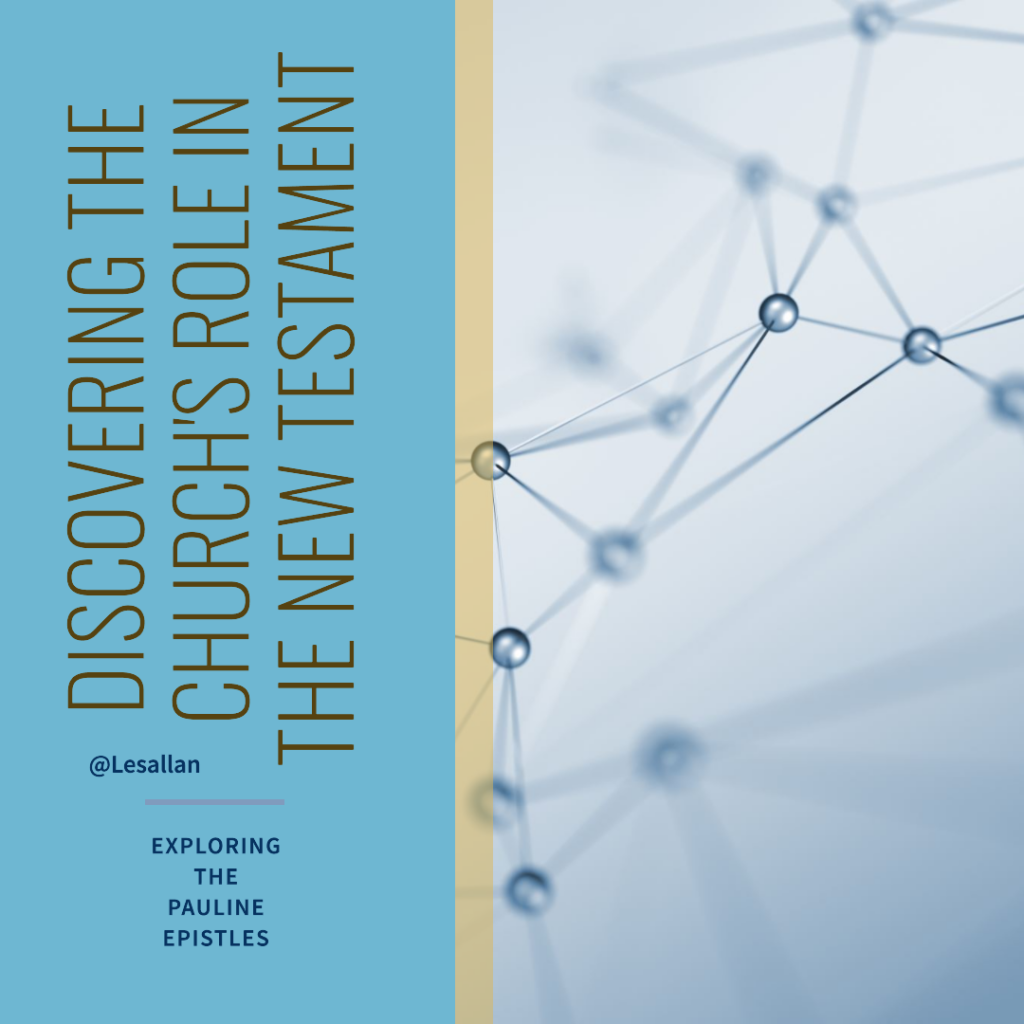Written by Lesallan – November 7, 2023

The Biblical View of the Church
The church’s role in the New Testament, particularly in the Pauline epistles, is an extensively studied theme. The Greek term “ekklesia,” which means “called out ones” (Strong, 1890), refers to the community of believers united by their faith in Jesus Christ. Paul employs this term to highlight various aspects of the church’s identity and mission. For instance, in Ephesians (NIV), Paul emphasizes the relationship between Christ and the church, stating that “God placed all things under his feet and appointed him to be head over everything for the church, which is his body, the fullness of him who fills everything in every way” (Ephesians 1:22-23, NIV). In this passage, Paul portrays the church as the body of Christ, implying that it shares in Christ’s life, authority, and purpose.
Additionally, he asserts that the church is the fullness of Christ, signifying that it manifests and expresses Christ’s presence and power in the world. The church is not a self-sufficient entity, but an integral and organic component of Christ’s redemptive work. According to Paul’s theology, the church, as the body and the fullness of Christ, plays a pivotal role in God’s plan of salvation. This thesis encapsulates the main idea of the statement and introduces the topic of Paul’s theology. It also signifies the scope and direction of the analysis, which will focus on Paul’s understanding and explanation of the church’s identity and mission concerning Christ.
According to the scriptural passage of Ephesians 1:22-23 (NIV), the church represents the body of Christ, which serves as the complete embodiment of God that permeates every aspect of existence. This passage suggests that the church is not a physical edifice or a manufactured institution, but rather a spiritual gathering of faithful individuals who share a profound connection with Christ and partake in His authority and power over all things. Through the church, Christ’s presence and splendor can be seen in the world as He works through His followers to achieve His objectives and reveal His mercy. As such, the church is responsible for obeying and loving Christ and functioning as His emissaries of peace and unity in a broken and divided world.
A church leader would recognize the embodiment of this nature and purpose within the church today by inspiring and empowering the members to strengthen their connection with Christ, utilize their unique abilities and talents for his divine mission, honor him with genuine and heartfelt worship, embody his love for one another, and spread the message of peace and hope to the world through the gospel.
I have consulted various reliable sources that provide historical, cultural, and theological insights to gain a deeper understanding of this passage. For example, I have studied commentaries such as Stott, J. R. W. (1979). The letter to the Ephesians. Inter-Varsity Press, or Hoehner, H. W. (2002). Ephesians: An exegetical commentary. Baker Academic. These commentaries offer detailed explanations of the text, its background, and its relevance to today’s context. Additionally, theological dictionaries like Alexander, T. D., & Rosner, B. S. (Eds.). (2000). New dictionary of biblical theology. InterVarsity Press, or Hawthorne, G. F., & Martin, R. P. (Eds.). (1993). Dictionary of Paul and his letters. InterVarsity Press can help clarify critical terms and concepts related to Paul’s theology and ecclesiology, such as “church,” “body of Christ,” and “fullness.” These resources provide a comprehensive range of articles that offer an in-depth understanding of Paul’s theological and ecclesiological perspectives. By using these sources and references below, one can better understand Paul’s view of the church and its role in God’s plan.
This document aims to provide a concise overview of Ephesians 1:15-23. This passage illuminates Paul’s prayer for the Ephesian believers and his admiration for God’s strength and generosity. Through analyzing the literary framework, the structure, primary themes, and the practical applications of this passage, I have endeavored to demonstrate its importance and significance for modern-day Christians. I have also consulted various sources offering historical, cultural, and theological insights to explore this passage further. For instance, commentaries like Stott (1979) and Hoehner (2002) provide detailed explanations of the text, its background, and its implications for contemporary readers. Theological dictionaries, such as Alexander and Rosner (2000) or Hawthorne and Martin (1993), contain articles that clarify essential terms and concepts related to Paul’s theology and ecclesiology, such as “church,” “body of Christ,” and “fullness.” By utilizing these references and sources, one can better understand Paul’s perspective on the church and its role in God’s plan.
In Christ,
Lesallan
References:
Alexander, T. D., & Rosner, B. S. (Eds.). (2000). New Dictionary of Biblical Theology. InterVarsity Press.
Hawthorne, G. F., & Martin, R. P. (Eds.). (1993). Dictionary of Paul and His Letters. InterVarsity Press.
Hoehner, H. W. (2002). The Letter to the Ephesians. Inter-Varsity Press.
Stott, J. R. W. (1979). The Message of Ephesians: God’s New Society. Inter-Varsity Press.
Strong, J. (1890). Strong’s Concordance. Strongsconcordance.org. https://strongsconcordance.org/
Williams, M. L. (2014, August 28). What Is The Bible Definition Of Church? What Is The Biblical View Of Church? Christian Crier. https://www.patheos.com/blogs/christiancrier/2014/08/28/what-is-the-bible-definition-of-church-what-is-the-biblical-view-of-church/


